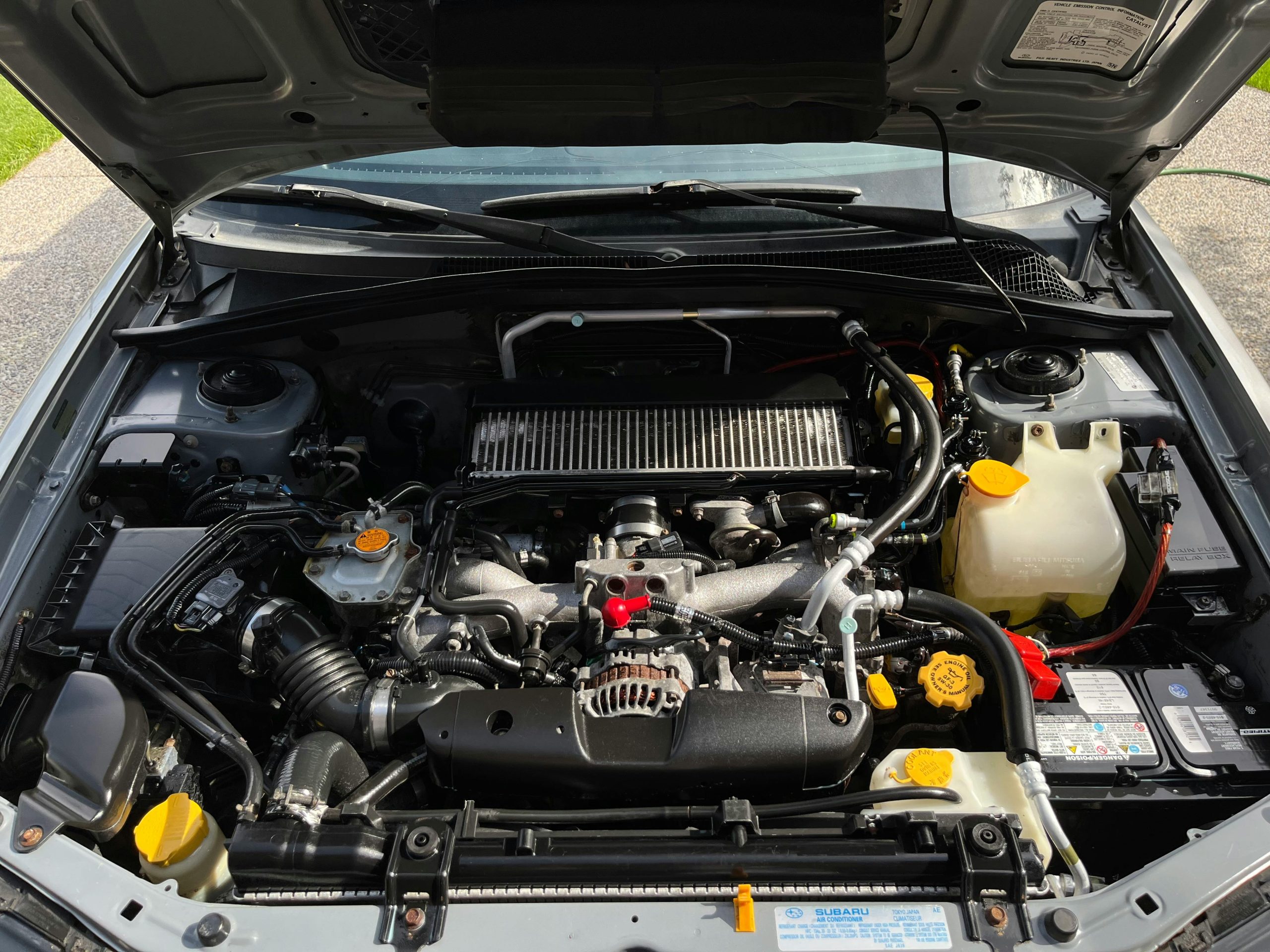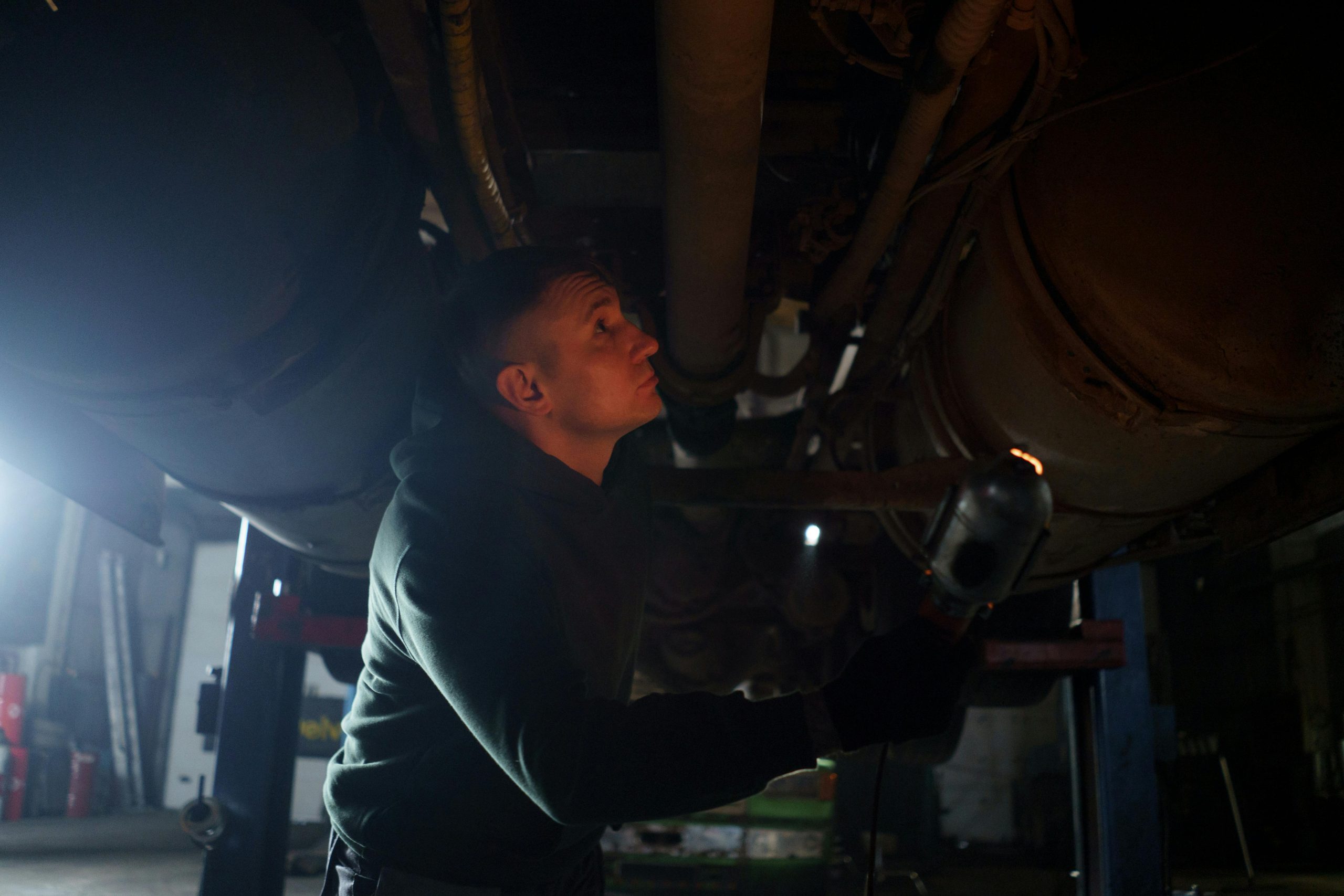If you’ve noticed a red or brown puddle under your car, or if your steering wheel groans or feels stiff as you turn, you might be dealing with a power steering fluid leak. These symptoms can escalate quickly, affecting your vehicle’s maneuverability and safety.
It is vital to identify the source, whether it’s a faulty seal, cracked hose, or failing pump. You’ll want to know how to address these issues effectively to prevent costly repairs or potential accidents.
Stay tuned to explore simple diagnostic steps and repair techniques that could save you a trip to the mechanic, and more importantly, keep you safe on the road.
Identifying Fluid Leak Signs
Identifying signs of a power steering fluid leak requires regularly checking for red or brown fluid spots beneath your car. These spots telltale signs that your power steering system may lose fluid.
Make sure to consistently inspect the area around the power steering pump and power steering reservoir for any signs of leakage. If you notice these fluid spots, it clearly indicates that an issue needs your attention.
In addition, listening for unusual noises when turning the steering wheel is important. Squealing or grinding sounds indicate low power steering fluid level, which can strain the power steering pump. This isn’t just an inconvenience; it’s a potential hazard that can affect your vehicle’s handling.
Furthermore, if your steering wheel feels unusually stiff or is difficult to turn, this is another significant sign of a power steering fluid leak. A decrease in fluid level can increase friction in the steering system, making it harder to maneuver your vehicle.
Diagnosing Potential Causes
After identifying signs of a power steering fluid leak, it’s important to investigate the potential causes behind these symptoms. You’re not alone in facing this issue; many vehicle owners experience similar challenges. Diagnosing the root causes is essential for maintaining your car’s best handling and preventing potential accidents.
Firstly, check the power steering pump and hoses. These are common culprits when you spot fluid under your car. Cracks or wear in the hoses can develop over time, leading to fluid leaks. Similarly, the power steering pump might be failing if you hear unusual noises like squealing or grinding.
Another potential cause could be the steering rack or gearbox. Wear and tear here can also lead to noticeable leaks. If your steering wheel feels unusually stiff, this is a sign that the rack may be compromised.
Don’t overlook the possibility of loose connections or degraded seals. These small components can fail and are often overlooked until significant damage occurs.
It’s essential to address these issues promptly. Ignoring the signs can damage your steering system severely, making your vehicle unsafe. Remember, fixing these problems early not only saves you from future headaches but also keeps you and your vehicle safe on the road.
Steps for DIY Repairs
You can address DIY repairs for power steering fluid leaks by first evaluating the extent of damage to hoses or seals. It’s important to follow manufacturer guidelines to ensure you’re using the correct type of fluid and filling to the appropriate level.
Here are the key steps you’ll want to take:
- Inspect and Replace Hoses and Seals
Carefully examine the hoses for any signs of wear or damage. If you find any issues, replace the hoses using the specific type recommended by the manufacturer. Similarly, check the seals for any leaks or deterioration and replace them as needed.
- Gather Necessary Tools and Equipment
Ensure you have the right tools on hand. Typically, you’ll need hose clamps, a wrench set, and new power steering fluid. Having the correct tools will prevent further damage and ensure a smooth repair process.
- Refill Power Steering Fluid
After replacing any faulty parts, refill the system with the power steering fluid specified by your vehicle’s manufacturer. Be careful not to overfill, as this can lead to additional problems.
If you’re unsure at any step or the damage seems extensive, it might be wise to seek professional help instead of risking further damage.
When to Seek Professional Help
While DIY repairs can be effective for minor issues, it’s important to recognize when professional help is necessary to handle persistent power steering fluid leaks. Identifying potential problems early and consulting with a professional can save you time and money in the long run.
If you find that topping up the hydraulic fluid doesn’t resolve the issue, or if the leak recurs, it’s time to inspect the power steering system more closely.
A professional mechanic can provide a detailed examination and accurately diagnose the source of the leak, be it the power steering fluid reservoir or another component. This proactive approach is essential for avoiding future complications and preserving the system’s integrity.
Maintaining Power Steering System
Regularly checking your power steering fluid levels is essential to prevent leaks and maintain the system functions at its best.
By keeping an eye on your power steering fluid, you’re taking a proactive step to maintain your vehicle’s health and your safety on the road.
Here are key maintenance steps you should follow:
- Use the Correct Fluid: Always use the power steering fluid type recommended by your vehicle’s manufacturer. Incorrect fluids can cause damage and leaks, compromising your car’s performance and safety.
- Regular Inspections: Schedule professional inspections of your power steering system. Experts can spot potential issues early, addressing leaks before they worsen. This preserves the system’s health and ensures reliable, safe driving.
- Prompt Leak Addressing: If you notice any signs of leakage, don’t ignore them. Address leaks immediately to prevent further damage and costly repairs. Early intervention keeps your steering smooth and your ride safe.
Conclusion
You’ve learned to spot leaks, diagnose issues, and tackle repairs for your power steering system.
Regularly check your hoses, seals, and fluid levels to catch leaks early.
If you’re unsure about a repair, don’t hesitate to consult a professional.
Remember, maintaining your power steering isn’t just about preserving your car’s performance it’s about ensuring your safety on the road.
So keep vigilant, stay informed, and take action swiftly to keep your steering smooth and responsive.
So, keep your vehicle in concert-ready condition and enjoy the symphony of the road. For any auto repair needs, you can contact HTC Automotive at 303-443-0145 or 970-431-6222.



